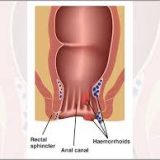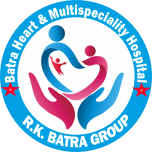Ventilators
Ventilators are critical life-support devices that play a pivotal role in the management of patients with respiratory failure, acute lung injury, and other conditions that impair lung function. These sophisticated machines deliver mechanical ventilation by supporting or completely taking over the breathing process for patients who are unable to do so adequately on their own. Here are detailed benefits and an analysis of ventilators:
Benefits of Ventilators:
Respiratory Support:
Ventilators provide essential support for patients experiencing respiratory failure due to conditions such as pneumonia, acute respiratory distress syndrome (ARDS), chronic obstructive pulmonary disease (COPD), or other critical illnesses. By delivering oxygen and managing the exchange of gases in the lungs, ventilators help maintain adequate oxygenation and carbon dioxide removal.
Increased Survival Rates:
In critically ill patients with severe respiratory compromise, mechanical ventilation can be lifesaving. By ensuring sufficient oxygen delivery and addressing compromised lung function, ventilators can significantly improve the chances of survival in these patients.
Management of Acute Conditions:
Ventilators are crucial in managing acute respiratory failure resulting from conditions such as sepsis, trauma, aspiration, drug overdose, or post-surgical complications. They provide supportive care during the acute phase of these conditions, allowing time for the underlying illness or injury to be treated and resolved.
Alleviation of Respiratory Distress:
Patients experiencing severe respiratory distress, including those with acute exacerbations of asthma or COPD, can benefit from the relief provided by ventilator support. The controlled delivery of breaths and adjustments to airway pressures can ease the work of breathing and reduce the feeling of air hunger in these individuals.
Protective Lung Ventilation
Modern ventilators offer advanced modes and strategies to deliver lung-protective ventilation, minimizing the risk of ventilator-induced lung injury. These strategies aim to prevent further harm to delicate lung tissues and reduce the risk of complications such as barotrauma and volutrauma.

Analysis of Ventilators:
Invasive and Non-invasive Ventilation:
Ventilators offer both invasive and non-invasive modes of ventilation. Invasive ventilation involves the insertion of an endotracheal tube, while non-invasive ventilation can be delivered through a mask or nasal interface. The versatility of these options allows for tailored approaches based on patient needs.
Advanced Monitoring and Control:
Modern ventilators are equipped with advanced monitoring capabilities, including real-time assessment of respiratory parameters, oxygenation, and patient-ventilator synchronization. They also feature sophisticated control algorithms and safety features to optimize ventilation and protect against potential complications.
Adaptive Modes and Alarms:
Ventilators are designed with adaptive ventilation modes that adjust to changes in patient condition and breathing patterns. Additionally, they incorporate alarms to alert healthcare providers to deviations in parameters, disconnections, or other critical events, ensuring timely intervention.
Weaning and Liberation Protocols:
Ventilators support weaning protocols and automated liberation trials to facilitate the safe and efficient transition of patients from mechanical ventilation to spontaneous breathing. These features help optimize the weaning process and reduce the duration of ventilator support.
Specialized Ventilation Modes:
Ventilators offer a variety of ventilation modes to address specific patient needs, such as volume control, pressure support, pressure control, synchronized intermittent mandatory ventilation (SIMV), assist-control ventilation, and more. These modes allow for tailored ventilation strategies based on the underlying pathology and patient response.
Integration with Monitoring Systems:
Ventilators can integrate with comprehensive patient monitoring systems, allowing for seamless data sharing and centralized management of ventilation parameters, alarms, and patient information. This integration promotes coordinated care and enhances situational awareness in the ICU.
Safety and Infection Control Features:
Ventilators are designed with safety features to prevent overdistention of the lungs, barotrauma, and equipment-related complications. Moreover, they incorporate infection control measures, including humidification systems, filters, and disinfection protocols, to minimize the risk of ventilator-associated infections.
Research and Innovation:
Ongoing research and innovation in ventilator technology continue to drive improvements in safety, efficiency, patient comfort, and outcomes. Advanced ventilation strategies, including adaptive support, personalized ventilation, and targeted therapies, are being developed to further enhance the capabilities of these devices.
In conclusion, ventilators are indispensable tools in the management of critically ill patients with respiratory failure, providing vital respiratory support, adaptability, and safety features. Through continuous advancements in technology and ongoing clinical research, ventilators remain at the forefront of critical care, contributing to improved patient outcomes and the delivery of high-quality respiratory support within the intensive care unit.
Why choose
- An expert team of experienced Cardiologists with more then 20 years experience.
- Comprehensive Heart Care from Preventive to Diagnostic and Therapeutic
- Multidisciplinary Care for all kinds of Heart Ailments
- 24X7 Heart Attack (mycardio infraction) Support
